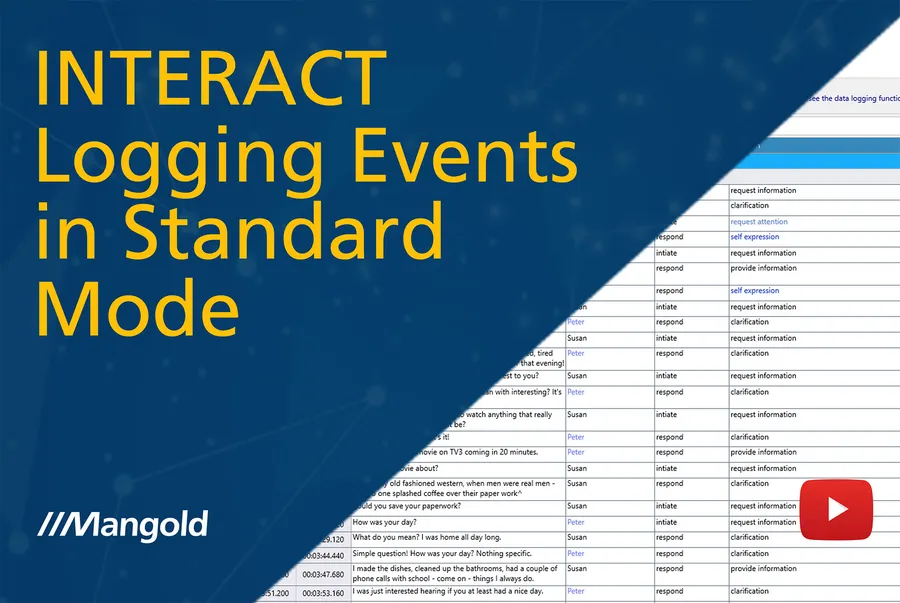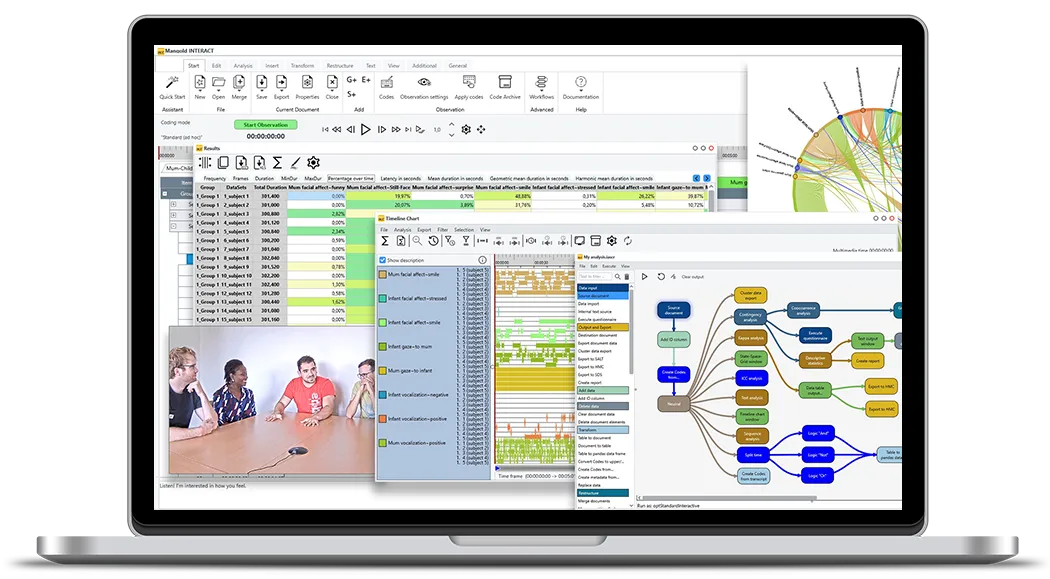Tutorial · 2 min read
INTERACT Tutorial: Event Logging in Standard Mode
Learn how to efficiently log events and code behavior using the standard coding mode in the Mangold INTERACT software for behavioral research.

This comprehensive tutorial introduces researchers and behavioral analysts to event logging using INTERACT’s standard coding mode. Perfect for both newcomers and experienced users, this guide demonstrates how to create and implement a basic coding system for behavioral observation studies. Whether you’re conducting therapy session analysis or other behavioral research, you’ll learn the essential steps for efficient event logging.
What You’ll Learn
- Create and organize a structured coding system
- Set up custom shortcut keys for rapid event logging
- Master the standard logging mode for behavioral observations
- Implement duration-based event coding
- Manage simultaneous and sequential event logging
- 0:17 Open the Code Definition dialog
- 0:35 Enter new expressions as Codes
- 1:13 Enter a Class name
- 1:38 Enter shortcut keys
- 2:22 Limit Codes per passes
- 2:58 Open a recording
- 3:03 Verify coding mode
- 3:17 Start Observation
- 3:34 Logging Events
- 5:02 Adjust playback speed
- 5:59 Timing details
- 6:18 End Observation
Tutorial Overview
Setting up an effective coding system is the foundation of behavioral analysis in INTERACT. This tutorial begins with the basic process of defining codes through the Code Definition dialog, where researchers can create descriptive expressions that match their research objectives. Using a practical example of tracking gaze direction during therapy sessions, the tutorial demonstrates how to establish a clear and organized coding structure.
The core of the tutorial focuses on the practical implementation of a coding system designed for event-based data logging. Users learn how to assign class names and shortcut keys, which streamline the coding process during observations. The tutorial emphasizes the importance of maintaining a focused and manageable set of codes for each observation pass, ensuring accuracy and efficiency in data collection.
A significant portion of the guide covers the actual observation process, including video control features and timing mechanisms. Users learn how to navigate through recordings, adjust playback speeds, and log events with precision. The tutorial explains both mouse-based and keyboard shortcut methods for event logging, allowing researchers to choose their preferred approach.
The tutorial concludes with advanced features such as managing overlapping events and utilizing the timeline for accurate event marking. These skills are essential for researchers conducting complex behavioral analyses that require precise timing and multiple simultaneous observations.
INTERACT: One Software for Your Entire Research Workflow
From data collection to analysis—including GSEQ integration—INTERACT has you covered.
